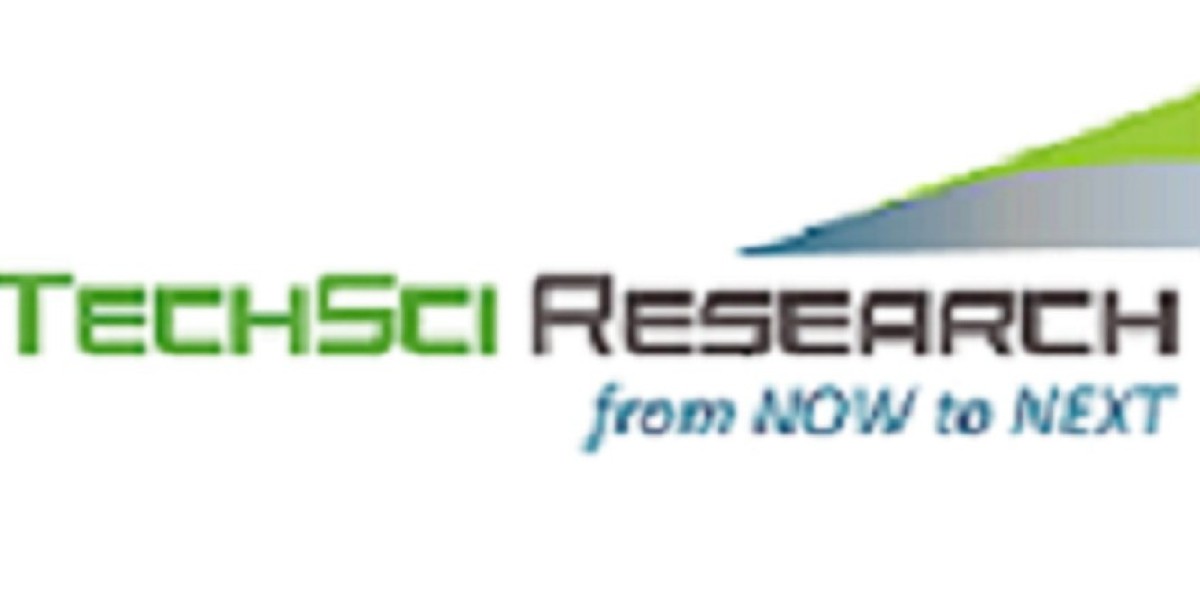According to TechSci Research's recent report titled “India Dairy Alternatives Market – By Region, Competition, Forecast & Opportunities, 2020–2030F,” the Indian dairy alternatives market was valued at USD 110.25 million in 2024 and is projected to reach USD 215.58 million by 2030, growing at a CAGR of 11.82% during the forecast period. The market is undergoing a dynamic evolution, shaped by shifting dietary preferences, a growing population of lactose-intolerant consumers, increased health awareness, and the influence of global wellness trends.
Traditionally, dairy has been central to the Indian diet—used in everything from daily tea and desserts to festive offerings and religious rituals. However, a dramatic shift is underway. Indian consumers, especially millennials, Gen Z, and urban dwellers, are gravitating toward plant-based alternatives such as almond milk, soy milk, oat milk, coconut yogurt, and dairy-free cheese. These alternatives, once considered niche, are becoming mainstream as people prioritize personal well-being, ethical consumption, and environmental sustainability.
Industry Key Highlights
Market Size (2024): USD 110.25 Million
Forecasted Market Size (2030): USD 215.58 Million
CAGR (2024–2030F): 11.82%
Top Plant-Based Sources: Soy, Almond, Coconut, Oats
Fastest-Growing Region: West India
Key Market Drivers: Health consciousness, lactose intolerance, veganism, environmental concerns
Dominant Distribution Channel: Supermarkets and Hypermarkets
Key Demographics: Urban youth, millennials, flexitarians
Download Free Sample Report - https://www.techsciresearch.com/sample-report.aspx?cid=4084
Emerging Trends Shaping the Dairy Alternatives Market
1. Rise of Veganism and Flexitarian Lifestyles
The modern Indian consumer is increasingly experimenting with plant-based eating habits. While full-time veganism is growing, flexitarianism—a semi-vegetarian diet that limits animal products—is gaining substantial momentum. This shift is driven by a combination of ethical concerns about animal welfare, health goals, and climate-conscious decisions. As more Indians explore plant-forward diets, dairy alternatives are becoming staple pantry items.
2. Fusion of Traditional Indian Flavors
Brands are responding to Indian tastes by infusing local and traditional flavors into plant-based products. Almond milk flavored with saffron, cardamom, and rose, or coconut yogurt spiced with turmeric and ginger, exemplify how dairy alternatives are being “Indianized” to improve acceptance and familiarity.
3. Technology-Driven Product Innovation
Food-tech startups are leveraging biotechnology, fermentation, and ingredient engineering to replicate the taste, texture, and nutritional profile of conventional dairy. With increased R&D investment, products such as plant-based cheese that melts, fermented yogurts, and butter alternatives with authentic spreadability are being launched to meet discerning consumer expectations.
4. Sustainability as a Key Marketing Pillar
Environmental messaging is playing a critical role in marketing. Brands are highlighting reduced carbon footprints, lower water usage, and ethical sourcing. Consumers, especially in metropolitan cities, are factoring in sustainability when making purchasing decisions, creating a competitive edge for transparent and green brands.
5. Clean Labels and Nutritional Fortification
Today’s consumers demand transparency in product labeling. Dairy alternative brands are emphasizing “clean labels”—offering products free from preservatives, artificial flavors, and allergens. Additionally, fortification with calcium, vitamin B12, and omega-3 fatty acids is a growing trend to compensate for nutrients commonly found in dairy.
Market Drivers: What’s Fueling the Growth?
1. Growing Health Consciousness
Health is at the heart of the dairy alternatives boom. Consumers are actively avoiding lactose due to intolerance or digestive discomfort, opting instead for plant-based products that are perceived to be lighter, cholesterol-free, and easier to digest. There's also a rise in awareness about the link between dairy and skin issues, inflammation, and hormonal imbalances, prompting a switch to alternatives.
2. Prevalence of Lactose Intolerance
India has one of the highest rates of lactose intolerance, particularly among adults. While this condition was underreported in the past, increasing diagnosis and health literacy have led to an informed consumer base that proactively seeks lactose-free options.
3. Influence of Global Food Culture
The surge in travel, global media exposure, and social media has accelerated the import of dietary trends from Western countries. Plant-based diets, once popularized in the West, have found a stronghold in Indian cities where cosmopolitan eating habits are now the norm.
4. Digital Commerce and D2C Revolution
E-commerce platforms and direct-to-consumer (D2C) channels have democratized access to dairy alternatives, even in semi-urban areas. With customized subscription models, influencers, and tailored digital campaigns, plant-based brands are finding success by speaking directly to the health-conscious consumer.
Regional Insights
West India Leads the Charge
West India, including Maharashtra, Gujarat, and Rajasthan, is emerging as the fastest-growing market for dairy alternatives. Cities like Mumbai, Pune, and Ahmedabad have high urban populations, growing awareness of health trends, and superior retail infrastructure. The presence of cooperative dairy giants like Amul has indirectly benefited the alternatives space by establishing distribution networks that startups can piggyback on. Additionally, the consumer base in this region shows a greater willingness to pay a premium for health and lifestyle products.
Competitive Landscape
The India Dairy Alternatives Market is highly competitive and rapidly evolving. Both established FMCG players and innovative startups are competing for market share by offering differentiated products across categories.
Key Players in the Market:
Blue Diamond Growers – A leader in almond-based dairy alternatives known for consistent quality and wide distribution.
Dabur India Ltd – Leveraging its Ayurvedic heritage to launch plant-based beverages infused with traditional wellness ingredients.
Danone SA – Pioneering fortified dairy alternatives with a global footprint and R&D strength.
Nestlé SA – Combining global innovation with local taste preferences to drive adoption.
ProSoya Foods – Focused on affordable soy-based products for the mass market.
Raw Pressery – A premium cold-pressed juice and plant-based milk brand catering to urban consumers.
Sanitarium Health and Wellbeing Company – Known for its ethical and health-centric approach.
The Hershey Company – Expanding its healthy snacking portfolio into dairy alternatives.
Dr. Oetker India Pvt Ltd – Introducing niche plant-based offerings, especially in yogurts and desserts.
Agro Tech Foods Limited (Sundrop) – Diversifying from oils into the plant-based beverage space.
These companies are engaging in product diversification, strategic partnerships, sustainable packaging, and aggressive branding to cater to varied consumer needs.
10 Benefits of the Research Report
Comprehensive Market Insights: Detailed market valuation, forecasts, and growth projections up to 2030.
Consumer Behavior Analysis: In-depth profiling of Indian consumer preferences and buying triggers.
Regional Breakdown: State-wise and city-level market growth analysis for targeted decision-making.
Product-Level Intelligence: Performance of specific product categories (milk, yogurt, butter, cheese).
Distribution Channel Evaluation: Effectiveness and reach of various retail channels like supermarkets, online, and specialty stores.
Competitive Benchmarking: SWOT analysis and strategies of key market players.
Innovation Trends: Highlights of product innovation, including plant sourcing, flavors, and packaging.
Sustainability Outlook: Insights into environmentally friendly practices and their impact on branding.
Policy and Regulatory Overview: Snapshot of government guidelines influencing product labeling and import regulations.
Investment Opportunities: Identification of white spaces and untapped segments within the market.
Future Outlook
The India Dairy Alternatives Market is poised for sustained and robust growth, driven by structural shifts in dietary choices, global alignment with plant-based trends, and increasing market penetration in Tier-II and Tier-III cities. The next six years will witness a deeper integration of technology in production, greater personalization, and wider affordability through local sourcing and economies of scale.
Companies that successfully blend traditional Indian values with modern innovation, while prioritizing transparency, sustainability, and consumer experience, will emerge as market leaders. Furthermore, the rise of functional foods—plant-based dairy with added immunity, gut health, and brain-boosting benefits—will add a new layer of differentiation in this space.
As India embraces a future where food is not only nourishment but also a statement of values and identity, dairy alternatives are becoming more than a trend—they are a lifestyle choice. With health, sustainability, and ethics converging at the center of food habits, the India Dairy Alternatives Market is well on its way to becoming a major pillar of the nation’s evolving food economy.
From metro millennials to semi-urban parents, from fitness enthusiasts to climate-conscious shoppers, dairy alternatives are increasingly becoming the choice of tomorrow, today.
Contact
TechSci Research LLC
420 Lexington Avenue, Suite 300,
New York, United States- 10170
Tel: +1-332-258-6602
Website: www.techsciresearch.com






